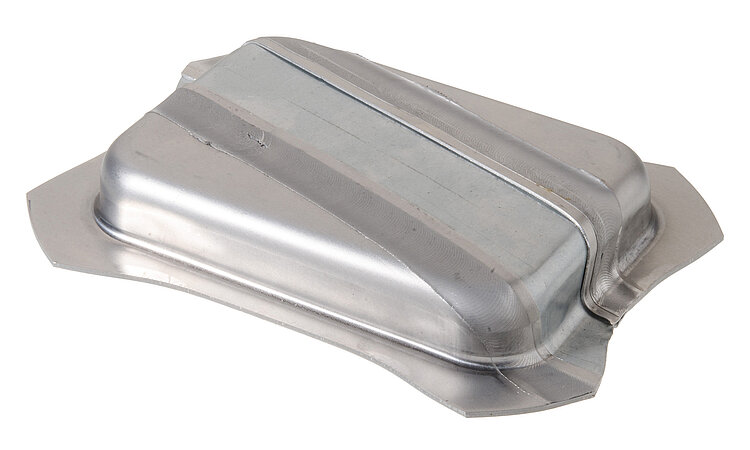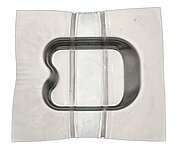Preferably, extremely light and robust (i.e. crash-safe) materials are used for the production of vehicle bodies. Aluminum, high-strength steels and in particular aluminum/steel hybrids are still regarded as the best possible compromise between desired material properties and a good cost-benefit ratio.
Using so-called tailor welded blanks is an established method to reduce the weight of modern vehicle bodies. These TWB are made from individual sheets of metal of different thickness or material properties, depending on the subsequent load exerted on the material, these blanks are first joined in a flat state by welding and then further processed by means of forming and deep drawing in order to form lightweight components. What is unproblematic with steel blanks can become a problem when using aluminum blanks: The weld seam has a lower strength than the surrounding (base) material, as aluminum loses strength locally due to welding. This means that the weld seam might crack during the forming or deep drawing process.
Scientists at the Material Testing Institute (MPA) of Stuttgart University, succeeded in developing a method that considerably improves the formability of tailor welded blanks (TWBs) made of aluminum. The process which integrates heat treatment into the manufacturing process was developed by the team of the Joining Technology and Additive Manufacturing Department headed by Martin Werz.
The highlight here is that the newly developed heat treatment strategy already incorporates the welding process as local solution annealing into the process flow.
Due to a timed heat treatment or artificial aging directly after welding, this new method allows for an unprecedented level of formability and thus a safe and reliable integration of tailor welded blanks made of aluminum. Another advantage is that the new process can also be applied to hybrid TWBs made of aluminum and steel. As solution annealing is no longer required, both energy consumption and production costs can be reduced significantly.
The process consists of two steps that can be easily integrated into the manufacturing process.
As first step the local solution annealing during the welding process in the TWB production is used. The subsequent low-temperature artificial aging process increases the strength of the weld seam prior to cold forming and thus avoid strain localization in the weld seam. Artificial aging is carried out once again after the forming process during the paint baking process until the required functional characteristics are achieved. The aim is to increase the strength of the entire component, including the weld seam.
This method opens up completely new fields of application while ensuring a high level of process reliability when using Al-based TWB and Al-steel-based TWB. One of the inventors, Martin Werz, is a specialist for joining different materials, especially by friction stir welding. Werz holds more than 20 patents in this field. This new method, which is designed to improve formability, complements the numerous innovations of the welding specialist Werz in the field of sheet metal processing. It adds the essential element of better forming options.
In tensile tests, with appropriately treated weld seams of EN AW 6016 (T4), the suitability of this innovative method was already proved. A patent application for the invention has been filed in Germany and in the United States. Technologie-Lizenz-Büro (TLB) GmbH supports Stuttgart University in patenting and marketing its innovation. TLB has been commissioned by Stuttgart University with the global business implementation of this pioneering technology and offers companies possibilities to cooperate and license the patents.
For more detailed information, please contact Dr.-Ing. Michael Ott, Innovation Manager, at ott(at)tlb.de.



